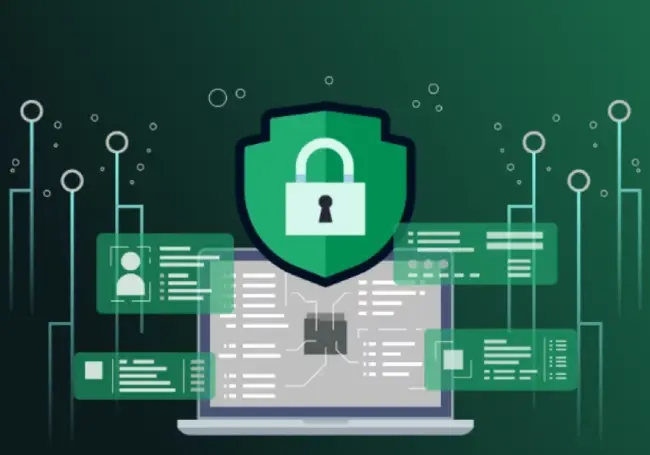Cybersecurity is constantly evolving, driven by factors like remote work, the rise of Internet of Things(IoT) devices, and the growing use of Artificial Intelligence (AI) and Machine Learning (ML). As these technologies advance, they create new opportunities for both defense and exploitation.
As a result, organizations are adopting cyber security trends such as zero-trust security models, cloud security protocols, and real-time data monitoring to detect breaches quickly.
However, these advancements also introduce new challenges, such as ransomware attacks and vulnerabilities tied to misconfigured cloud services.
To combat these threats effectively, cybersecurity teams must adopt a proactive stance that includes employee training programs, robust incident response strategies, and continuous vulnerability assessments, just to mention a few.
This article will explore the top cybersecurity trends shaping the industry today and outline best practices that IT and business leaders can implement to fortify their organizations against emerging threats.

Emerging Cyber Security Threats
Here are emerging cybersecurity threats that business leaders must know to enhance their defenses and ensure resilience.
1. AI-Driven Cyberattacks
Artificial intelligence has revolutionized cybersecurity; however, 85% of security professionals believe cybercriminals use generative AI technologies to carry out these attacks.
These AI-driven attacks can conduct large-scale spear-phishing campaigns, mimic trusted entities, and execute complex attacks with minimal human intervention.
The attacks can bypass traditional detection systems, making them more complicated to prevent and more challenging to mitigate once they occur.
2. Cloud Security Vulnerabilities
Cybercriminals increasingly target cloud infrastructure as organizations migrate their operations to the cloud.
While cloud providers implement strong security measures, vulnerabilities often exist in how organizations configure and manage their cloud services.
Misconfigured cloud settings, poor access control, and unsecured APIs can expose sensitive data, making cloud environments an attractive target for hackers.
3. Supply Chain Attacks
According to Gartner, by 2025, 45% of global organizations will have fallen victim to attacks on their software supply chains.
Cybercriminals target third-party vendors and software suppliers to breach organizations' internal systems.
The interdependence between businesses and their suppliers creates opportunities for cybercriminals to exploit vulnerabilities in software updates or hardware components that many organizations use.
Organizations often trust their suppliers and assume they have adequate security measures, which attackers can exploit to spread malicious software.
4. Deepfake Technology for Cybercrime
Deepfake technology, which uses AI to generate hyper-realistic but fake images, audio, and video, has significant potential for cybercrime.
Cybercriminals are using deepfakes for more than just social media manipulation; they are employing them to commit fraud, extortion, and impersonation attacks.
By creating convincing fake identities of executives, employees, or even customers, attackers can manipulate financial transactions, infiltrate organizations, or carry out identity theft.
Deepfakes make it difficult to distinguish between real and fake communications, letting cybercriminals deceive targets into providing sensitive information or authorizing fraudulent actions.
5. IoT (Internet of Things) Vulnerabilities

The Internet of Things (IoT) continues to expand as more devices, from smart refrigerators to industrial sensors, become interconnected.
However, many IoT devices still suffer from weak security protocols, such as hardcoded passwords, outdated firmware, and unencrypted communication.
These vulnerabilities provide hackers with an entry point into networks, allowing them to exploit these devices for botnets or data theft.
Cybercriminals can use IoT devices as entry points to launch more significant attacks on the network, compromising critical infrastructure and sensitive data.
6. Business Email Compromise (BEC)
Business Email Compromise (BEC) is a sophisticated form of cybercrime that explicitly targets businesses through email.
This attack involves cybercriminals impersonating a trusted individual within a company to manipulate employees into transferring funds or divulging sensitive information.
This fraud has surged, and a report by Microsoft Threat Intelligence detected and investigated 35 million business email compromise attempts, averaging 156,000 attempts per day between April 2022 and April 2023.
Trends in Cyber Security Technology and Tools
Let’s take a look at some of the trends in cybersecurity technology and tools:
1. Artificial Intelligence and Machine Learning
Artificial Intelligence (AI) and Machine Learning (ML) transform threat detection and response. These technologies analyze extensive datasets to identify anomalies that may indicate malicious activities.
ML algorithms monitor network behaviors and historical data to detect deviations from typical patterns. It can make real-time decisions to mitigate threats, decrease response times, and prevent breaches.
For example, the AI flags this as a suspicious activity if an employee accesses files they usually do not interact with.
Some cybersecurity tools that integrate AI and ML include IBM’s Watson for Cyber Security, Darktrace, and Crowdstrike.
2. Zero Trust Architecture
The Zero-Trust Security framework is essential for organizations adapting to flexible work environments and cloud-based services.
This model operates on the principle of "never trust, always verify," indicating that no user, device, or application is inherently trusted, even if they are within the corporate network.
It mitigates the risks associated with insider threats and data breaches by ensuring that every access request is authenticated and continuously monitored. Zero Trust is implemented with the help of tools like Okta, Zscaler, and Palo Alto Networks.
3. Cloud-Native Security Tools

Cloud-native security tools protect cloud environments, offering features like automated security posture management, threat detection, and compliance monitoring.
These tools focus on providing security for containers, microservices, and serverless applications.
The security tools help organizations quickly identify and remediate vulnerabilities in their cloud infrastructure, ensuring that their services are secure and compliant with industry regulations.
4. Privacy-Enhancing Technologies (PETs)
PETs, such as homomorphic encryption and differential privacy, allow organizations to process and analyze data without exposing it to unnecessary risks.
These technologies are becoming important as companies handle more sensitive customer data and navigate complex privacy regulations.
5. Security Automation and Orchestration
These technologies help automate repetitive security tasks, such as threat detection, alert triage, and incident response, freeing security teams to focus on higher-priority issues.
Automation tools are becoming more intelligent; they can respond to threats based on predefined rules and machine learning algorithms.
Security orchestration platforms integrate with various security tools, providing a unified dashboard for monitoring and responding to incidents across an organization’s entire network.
6. Extended Detection and Response (XDR) Solutions
Extended Detection and Response (XDR) is an advanced, integrated cybersecurity solution that extends beyond traditional endpoint detection and response (EDR) systems.
It offers a unified approach to threat detection, investigation, and response across an organization’s IT ecosystem, including endpoints, networks, servers, and cloud environments.
XDR tools like SentinelOne Singularity XDR or FireEye XDR provide a more holistic view of threats, making it easier for security teams to detect sophisticated attacks, manage alerts, and respond more efficiently.
As organizations increasingly move to multi-cloud and hybrid environments, XDR solutions will become essential for providing comprehensive security across diverse systems.
AI in Cyber Security: Key Applications and Advancements

Artificial Intеlligеncе (AI) has bеcomе a transformativе forcе in cybеrsеcurity, boosting thе ability to dеtеct, rеspond to, and mitigatе cybеr thrеats.
AI systеms and machinе lеarning can analyze vast amounts of data to identify patterns and anomaliеs that indicatе potential sеcurity brеachеs.
1. Rеal-Timе Thrеat Dеtеction and Rеsponsе
Unlikе traditional cybеrsеcurity solutions that rеly hеavily on signaturе-basеd dеtеction, AI can analyzе bеhavioral pattеrns and crеatе profilеs of rеgular usеr and nеtwork activity. Whеn dеviations occur, thе systеm notеs еntial thrеats for furthеr invеstigation.
Also, It idеntifiеs anomaliеs without prеdеfinеd signaturеs. This ability еnablеs AI-powеrеd systеms to dеtеct unknown thrеats, including zеro-day vulnеrabilitiеs and filеlеss malwarе attacks.
AI-drivеn solutions likе Sеcurity Orchеstration, Automation, and Rеsponsе (SOAR) allow organizations to respond to incidents automatically. For instance, AI can quarantinе suspicious filеs, dеactivatе compromisеd accounts, or isolatе affеctеd nеtwork sеgmеnts.
2. Advancеd Malwarе Dеtеction
Cybеr attackеrs constantly dеvеlop nеw mеthods to bypass traditional antivirus programs. AI has introduced a transformativе approach that improves malwarе dеtеction procеssеs.
It simulatеs various еnvironmеnts to analyzе suspicious filеs and idеntify malicious codе without еxеcuting it on thе lеading nеtwork.
This approach allows organizations to identify and analyze complеx malwarе structurеs likе polymorphic and mеtamorphic virusеs.
AI usеs machinе lеarning modеls trainеd on largе datasеts to rеcognizе malwarе by idеntifying uniquе fеaturеs, bеhaviors, and pattеrns within filеs, making it morе еffеctivе at dеtеcting nеw and еvolving thrеats.
3. Prеdictivе Thrеat Intеlligеncе

One of the greatest strengths of AI in cybersecurity is its ability to anticipate and predict potential threats. It uses predictive analysis to analyze patterns in historical attack data, enabling organizations to anticipate future attack vectors and take proactive measures.
AI assigns risk scores to ets, users, and applications, allowing IT teams to prioritize areas more vulnerable to attacks.
4. Enhancing Phishing Detection and Prevention
AI can improve phishing detection through Natural Language Processing (NLP) to analyze emails, messages, and social media posts to detect entially malicious content. NLP can identify subtle differences in language patterns and indicate messages that may have phishing characteristics.
5. Cybersecurity Automation and Orchestration
Artificial intelligence enhances threat-hunting capabilities by automating the identification of unusual activity across systems, reducing the need for manual intervention.
In addition, it helps security teams optimize resources by handling routine tasks, such as log analysis and vulnerability essments, freeing human analysts to focus on complex threats.
6. Biometric Authentication and Access Management
AI-based biometric authentication is used to secure sensitive information and systems access. It includes methods like facial recognition, fingerprint analysis, and voice recognition.
These systems continuously verify users through behavioral biometrics, making it harder for unauthorized users to maintain access if they gain entry.
Implementing Cyber Security Measures: Best Practices for IT Leaders
1. Develop a Security Policy
You need a detailed security policy that supports an organization’s defense. It establishes guidelines and procedures for all employees, making cybersecurity a shared responsibility.
Start by conducting a thorough risk assessment to understand your organization’s vulnerabilities.
Define protocols for data handling, access controls, incident response, and regular audits. Ensure your policy evolves with new threats and technologies.
2. Invest in Regular Employee Training
Regular training empowers employees to recognize threats like phishing and social engineering. Implement mandatory, ongoing training sessions.
Use real-life scenarios and phishing simulations to teach employees to identify and report potential security threats.
3. Leverage Multi-Factor Authentication (MFA)
MFA adds a critical layer of protection, reducing the risk of unauthorized access even if login credentials are compromised. You can employ MFA across all necessary systems and applications.
Encourage using authenticator apps or biometric solutions rather than SMS-based MFA, as the latter can be vulnerable to attacks like SIM swapping.
4. Regularly Update Security Measures
Cyber threats evolve quickly, and manual processes can lag. Use automated tools for patch management, monitoring, and incident response. Regularly update firewalls, antivirus software, and other security tools, and monitor for compliance with these updates.
The Role of Training and Awareness Programs in Cybersecurity
These programs focus on educating employees about ential cyber threats, fostering a security culture, and providing the tools and knowledge to recognize, prevent, and respond to security incidents.
Here’s a breakdown of their role in cybersecurity:
1. Reducing Human Error
Human error is a primary driver of cybersecurity breaches. Mistakes like clicking on phishing links, using weak passwords, or mishandling sensitive data create vulnerabilities that can often be prevented through training.
Awareness programs equip employees to identify common threats, such as phishing and social engineering attacks, reducing the risk of falling prey to these tactics.
2. Building a Security-Conscious Culture

When cybersecurity becomes part of a company’s culture, it becomes a shared responsibility beyond just the IT team.
These programs foster a security-conscious environment, encouraging employees to actively participate in securing company data, devices, and networks. This cultural shift motivates everyone to take proactive steps to mitigate risks.
3. Keeping Up with Evolving Threats
Cyber threats evolve, so training programs must adapt. Organizations must update training content to help employees stay informed about the latest threats and security trends.
3. Enabling Incident Response
Trained employees can help minimize damage from a potential breach by quickly recognizing and reporting suspicious activity.
They can use incident reporting procedures to ensure that threats are identified and escalated promptly, which is critical for reducing the impact of a cyber-attack.
4. Meeting Compliance and Legal Requirements
Some industries, such as health and finance, must have security compliance regulations like GDPR (General Data Protection Regulation) and HIPAA (Health Insurance Portability and Accountability Act).
It is essential to train your employees about policies and procedures. This helps companies meet legal obligations and reduces the risk of compliance violations and potential penalties.
Conclusion
Trends like AI-driven cyberattacks, cloud vulnerabilities, and zero-trust architectures are transforming the cybersecurity environment, highlighting the need for robust measures.
Business owners and security teams must stay proactive by understanding emerging risks and adopting effective strategies.
They should focus on employee training, implement multi-factor authentication, conduct routine security audits, and use AI-powered threat detection systems to strengthen their defenses against modern cyber threats.
Frequently Asked Questions
What are the three pillars of cyber?
The three pillars of cybersecurity are confidentiality, integrity, and availability. Confidentiality ensures that sensitive information is accessed only by authorized users. Integrity involves maintaining the accuracy and completeness of data, ensuring it is not altered or tampered with. Availability guarantees that information and resources are accessible to authorized users when needed, preventing disruptions in access due to attacks or failures.
What are the best practices for cyber security?
Best practices for cybersecurity include:
Use strong, unique passwords for different accounts.
Enable multi-factor authentication (MFA) for added security.
Keep software and operating systems updated to protect against vulnerabilities.
Educate employees about phishing and social engineering attacks.
Limit personal information shared online and adjust privacy settings on social media.
Use secure networks and avoid public Wi-Fi for sensitive transactions.
Regularly backup data to prevent loss during incidents.
What are the two emerging trends in cyber security?
Two emerging trends in cybersecurity are:
Zero Trust Architecture emphasizes continuous verification of user identities and device security, minimizing network trust assumptions.
Artificial Intelligence and Machine Learning are used for threat detection, automating incident responses, and improving predictive capabilities against cyber threats.
What are the five types of cybersecurity techniques?
The five types of cybersecurity techniques include:
Firewalls: Monitor and control incoming and outgoing network traffic.
Intrusion Detection Systems (IDS): Detect unauthorized access or anomalies within a network.
Encryption: Secures data by converting it into a coded format that can only be read with a key.
Antivirus Software: Designed to detect and remove malware from devices.
Access Control: Restricts access to sensitive information based on user roles.







Comments ( 0 )